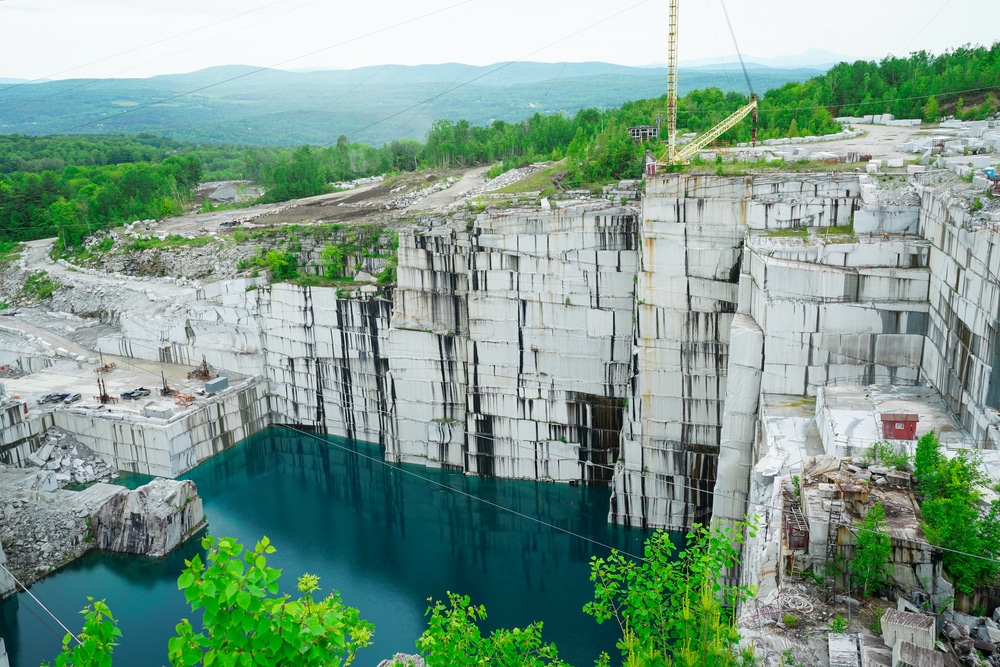Granite Quarries in South Africa Wonders: Discovering the Quarry Landscape
Granite Quarries in South Africa Wonders: Discovering the Quarry Landscape
Blog Article
Uncovering the Rich Background and Sustainable Practices of Granite Quarrying
As we stand on the precipice of uncovering the complex tapestry of granite quarrying, a trip with time exposes not simply the physical act of drawing out rock yet likewise the social and historical value woven into the very fabric of this practice. From the ancient beginnings that laid the structure for modern quarrying methods to the sustainable techniques that are forming the future of this industry, each carve mark on granite surface areas informs a story waiting to be discovered (granite quarries in south africa). The legacy of granite quarrying stretches far beyond simple removal; it is a testimony to human ingenuity, strength, and the long-lasting appeal of this stunning stone
Old Origins of Granite Quarrying
Dating back to ancient civilizations, the method of quarrying granite has actually been an important part of human history and architectural development. The earliest evidence of granite quarrying days back to ancient Egypt, where massive pyramids and elaborate sculptures were crafted from this resilient rock. The Egyptians utilized primitive devices to draw out granite blocks from quarries, showcasing the importance of this material in their huge buildings.
Relocating ahead in background, the Greeks also made substantial contributions to the quarrying of granite. The Greeks utilized granite in numerous architectural wonders, such as holy places and statues, showing their ability in shaping and carving this sturdy rock. The Romans additionally refined the strategies of quarrying granite, utilizing sophisticated devices like chisels and hammers to essence and shape granite for their renowned structures.
Via the centuries, the technique of quarrying granite has evolved, with contemporary technologies boosting efficiency while keeping the ageless appeal of this natural stone - granite quarries in south africa. From ancient people to modern builders, the heritage of granite quarrying proceeds to shape our world
Development of Quarrying Strategies
The advancement of quarrying techniques has actually been noted by a continuous development towards better efficiency and precision in drawing out granite. From the fundamental approaches used by our forefathers to the advanced technologies utilized in contemporary quarrying operations, the sector has gone through significant innovations. Early quarrying strategies entailed manual work with standard tools such as chisels, hammers, and wedges to extract granite blocks from the planet. As human beings progressed, techniques like fire-setting and primitive nitroglycerins were introduced to facilitate the extraction process.
In even more current times, the introduction of equipment revolutionized the quarrying sector, enabling quicker extraction prices and enhanced performance. Technologies such as diamond wire saws, high-pressure water jets, and pneumatically-driven drills have come to be common in modern quarries, permitting specific cutting and minimized waste. In addition, advancements in computer-controlled devices and 3D modeling have actually enhanced quarrying operations, causing very little environmental effect and boosted sustainability practices. As the demand for granite remains to increase, the advancement of quarrying methods continues to be essential to conference industry requires successfully and sustainably.
Social Importance of Granite
Granite holds an extensive social significance across different worlds as a result of its long-lasting presence in architectural masterpieces and revered monoliths. From the stunning pyramids of Egypt to the elaborate makings of the Angkor Wat holy place in Cambodia, granite has actually been a product of option for expressing splendour and long go to this site life in social heritage. In ancient Rome, granite columns embellished holy places and public structures, representing strength and permanence. The cultural significance of granite extends beyond its physical attributes; it symbolizes resilience, stability, and eternity, making it a symbol of withstanding heritages and customs.

Sustainable Practices in Quarrying
Among the rich background of granite quarrying and its cultural significance exists a growing emphasis on lasting practices within the market. As environmental recognition and problems concerning resource deficiency have actually enhanced around the world, the quarrying sector has significantly embraced sustainable methods to decrease its effect on the setting and surrounding areas.

Additionally, improvement and recovery of quarry websites post-extraction are essential to lasting practices. By restoring quarried areas to a natural or valuable state, such as developing wild animals habitats or leisure rooms, quarriers can counter the ecological footprint of their procedures and contribute positively to the regional ecological community.
Legacy of Granite Quarrying
With a historic background soaked in workmanship and industrial development, what withstanding influence has granite quarrying left on the landscape of modern-day society? The heritage of granite quarrying goes beyond plain extraction practices; it has actually shaped architectural more information marvels, urban landscapes, and cultural heritage worldwide. The resilient nature of granite has made it a favored option for monuments, buildings, and facilities, standing as a testament to the ability and creativity of quarry employees throughout generations.
Moreover, the financial impact of granite quarrying can not be ignored. The industry proceeds to give employment possibility and drive regional economic climates in areas where granite extraction is common. It has likewise spurred technical innovations in More Help quarrying techniques and equipment, resulting in more reliable and sustainable practices.
In regards to sustainability, the tradition of granite quarrying includes efforts to alleviate environmental influences with reclamation jobs and accountable source monitoring. By balancing financial rate of interests with environmental stewardship, the industry strives to ensure that future generations can remain to profit from this enduring natural source.
Final Thought

Report this page